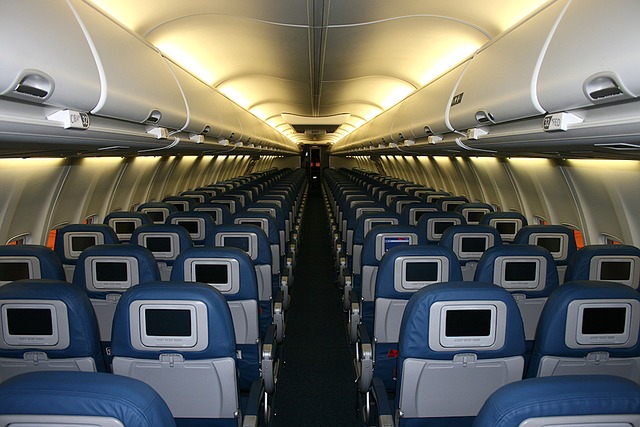In a rapidly changing world where technology is evolving at a rapid pace, the CFBWH system in aviation as well as weather forecasting is a true innovator. This advanced structure not only adds on the safety of aviation but also changes the dynamics in aviation relations with the weather patterns. For those passionate about technology, CFBWH is a system one has to look forward to where technology will help in improving accuracy, reducing wastage in time and making the task easier.
Understanding CFBWH and Its Importance
CFBWH stands for Comprehensive Flight and Weather Hybrid. In the simplest terms, CFBWH is probably the most advanced combination of aviation and weather technologies you’ve ever hear of. The goal of such system is to capture and process actual weather conditions for informational purposes for the pilots and weather specialists. With this system, flight data and machine intelligence is used to increase safety, efficiency, and the travel experience in the aviation sector.
In the modern world, the role of Utility CFBWH in aviation is very important and can’t be underestimated. As the number of daily flights grows, the requirement of getting precise and reliable weather data has reached an all-time high. At the same time, even the weather forecasters use the strength of CFBWH to enhance their forecasts and be prepared for imminent weather changes.
The Technology Behind CFBWH
Real-Time Data Acquisition
A major advantage of the CFBWH technology is the fact that it can obtain real-time data from various sources. This is made possible due to cooperation between meteorological satellites and ground-based radar systems, which make it possible to receive weather updates very frequently. With the assistance of this data, which is also acquired from the weather stations, CFBWH guarantees that attempts to provide pilots and forecasters with the most reliable and up to date weather information possible can be achieved.
Access to up-to-date data allows one to make better decisions. As a result, suited flight paths can be selected by pilots and timely warnings and advisories can be given out by meteorologists. The overall efficiency and immediacy present in such systems today surpasses that of older forecasting systems.
Deep Learning Integration
Another key aspect of CFBWH is the application of the deep learning algorithms when working with weather data. By assimilating both historical and asynchronous datasets, the system is able to discover correlations and trends which would otherwise be hidden to the human eye. Such a degree of prediction capability is achieved due to machine learning.
Weather forecasting accuracy is enhanced by deep learning integration, which also helps improve the predictability of particular models rapidly. As experiencing so much data, CFBWH can adapt, improve its predictions and therefore be more accurate in the future. This capability of self-improvement is one of the central aspects of the system’s efficiency.
Applications of CFBWH
Enhancing Flight Safety
CFBWH, as one of its main purposes, is of great importance in increasing the safety of flights. With CFBWH, weather conditions such as winds can be communicated in real time to the pilots, who can then make appropriate decisions regarding the flight path and altitude. In this respect, the usefulness of the system is evident in avoiding thunderstorms and turbulence which could be hazardous to the flying vehicle.
Another way CFBWH secures the safety of its flights is route optimization. The analysis of meteorological data makes it possible for the system to recommend alternate routes that avoid the most dangerous weather conditions. Such a preventive measure decreases the risk of weather-related incidents and helps enhance the safety of the flying experience from the perspective of passengers and crew.
Optimizing Air Traffic Management
Apart from individual air travel, CFBWH aids strongly in the improvement of the management of air space traffic. By enhancing the sequences of the flights and their paths, the system assists in alleviating the pressure of traffic in the airs. Such effectiveness is not only advantageous for the airlines but also for the passengers as they are subject to fewer delays and interruptions.
The increase in the number of flights is putting pressure on the already overcrowded airspace, which is a main concern nowadays. This problem is tackled by the CFBWH by enabling better communication between the aircraft and the air traffic control towers. Such an outcome allows all the parties to have a better experience with air travel as it becomes easier.
Improving Passenger Experience
CFBWH not only contributes to improved safety and efficiency but it enhances passengers’ experiences. Information on delays or changes to the schedule allows travelers to arrange their trips with confidence. This clarity builds the trust and contentment of passengers, who prefer to be notified throughout the process.
In addition, by improving flight routes as well as shortening off-block and taxi times, CFBWH also enhances the travel experience. The reduced time and interruptions during flights allows the passengers to fly comfortably and conveniently.
Advantages of CFBWH Over Traditional Systems
Enhanced Predictive Capabilities
CFBWH offers improved capabilities which are superior to the traditional systems in regards to prediction. The reality that this system adjusts for the forecast in real time depending on changing weather patterns increases accuracy tremendously. Such adaptability is vitally important in the current world where the trends of the weather can change and vary very rapidly and unexpectedly.
Forecasting the effects of weather on aviation is yet another area within which CFBWH excels. By use of data from different sources, the system is able to make accurate predictions on weather impacts on flight schedules. This enables stronger coordination within the airline sector, and reduces the effects caused by adverse weather on operations.
Fuel Efficiency and Cost Savings
Fuel efficiency is a very important factor for airlines who wish to lower operating costs and environmental effects as well. CFBWH further advances it’s goal by planning itineraries which are dependent on the weather patterns. Airlines are able to cut costs by avoiding wasteful fuel use thanks to the use of optimal routes.
Apart from reducing costs, this focus on fuel efficiency helps to achieve other sustainability objectives of many players in the aviation environment. Since fuel usage is reduced, airlines play their part in the efforts to lower carbon emissions and maintain corporate social responsibility standards.
Continuous Improvement through Machine Learning
One of the most promising points about CFBWH is the fact that it can continuously learn through machine algorithms. The system can enhance its predictive model over time through the analysis of big data. Such an ability to self-improve makes it certain that CFBWH never lags behind in the field of weather prediction.
Paralegals support lawyers by collecting information, drafting documents, organizing files and preparing for trials. A boost in CFBWH usage means high accuracy and reliability of information in the process. Such flexibility is one of CFBWH’s distinctive attributes as well as its increasing popularity in the aircraft sector.
Challenges in Implementing CFBWH
Data Security and Privacy Concerns
Despite the several advantages offered by CFBWH, its operationalization is not without problems. The processing of live data raises concerns of privacy and security, especially in the context of information performed by people. It is necessary to guard such information and there is need for strict security measures to reduce likelihood of the associated threats.
Undeniably, organizations intending to implement CFBWH should assess their data security practices and the relevant and applicable regulations. This is important in the context of ensuring the security and functionality of the system.
Integration with Legacy Systems
However, integrating CFBWH with the current aviation infrastructure poses an additional challenge. A good number of airlines as well as airports operate using the old systems which may not be compatible with the new technology. Integrating these systems can prove to be expensive and difficult, requiring a lot of detailed planning and execution.
Though there are issues confronted while integrating CFBWH, the advantages of CFBWH makes it worthy to solve these challenges. It can be anticipated that organizations that successfully employ such a system will earn a strategic advantage and such an organization will be one of the aviation pioneers.
Training and Adaptation
Expanding with the Cooperative Fund Based Window Housing, CFBWH brings onboard new challenges as it comes with the training and learning of personnel. Employees have to be prepared to utilize the new technology properly, as well as comprehend how it will change how they carry out their responsibilities. This training is very important for making the transformation seamless and fully enjoying the benefits of CFBWH.
Everybody in the organization should prioritize their training programs that help the employees in implementing the new technologies and practices in the working environment. Organizations can promote innovation in their scope of business operations through putting up ventures for education and development.
Future Potential and Impact of CFBWH
Expanding Beyond Aviation
Although CFBWH deals mostly with flying systems, its usage does not end here. The system can be of value for the transport and logistics sectors where good weather intelligence is of great help. Also, CFBWH attributes will help emergency services and agriculture due to the improved predictive capacities of CFBWH.
As CFBWH extends its reach, it can be able to promote new technologies and efficiency of work processes in many industries. This range of applicability proves the flexibility of the system and its design for the requirements of different sectors.
Enhancing Climate Resilience
Extreme weather situations are ceaselessly increasing in frequency, making climate resilience building therefore one of the most paramount objectives for today’s society. Forecasting and anticipatory planning are skills Central Florida Branch of the Worldwide Health Organization experts in. With such preparedness, organizations are able to reduce the impact of extreme weather on their activities and operations.
In addition, CFBWH endorses the best management practices through its tenets encouraging efficient resource application and waste minimization. This similar concept provides a system which can be useful in achieving global sustainability objectives in climate change adaptation.
Driving Sustainable Aviation Practices
The aviation industry is aware and concerned about sustainability, and CFBWH takes steps in this direction. By optimizing the flight trajectory and minimizing the fuel, the cut down of the system’s carbon footprint is facilitated. The pursuit of efficiency and environment looked after is consistent with the devotion of the industry to sustainability.
Well managed organizations that apply CFBWH are prepared well towards achieving the world sustainability goals while also proving their responsibility in the business practices. This obligation is not only good for the environment but also adds value to the image and competitiveness of the organization.
Conclusion
CFBWH is changing the game in terms of both flight and weather technologies by facilitating the in – situ data collection and the models’ predictive capabilities. This system comes with so many advantages: it contributes to the reduction of operational risks and the increased efficiency of flights and the quality of service for passengers. CFBWH is nevertheless, particularly promising in terms of its practical application both in scope and practice.
As the aviation sector continues to advance, it will be essential to invest in new technologies such as to remain competitive and incorporate sustainable practices. Organizations which utilize this technology can establish themselves as pioneers in the aviation industry, thus contributing to a more efficient and greener future.




